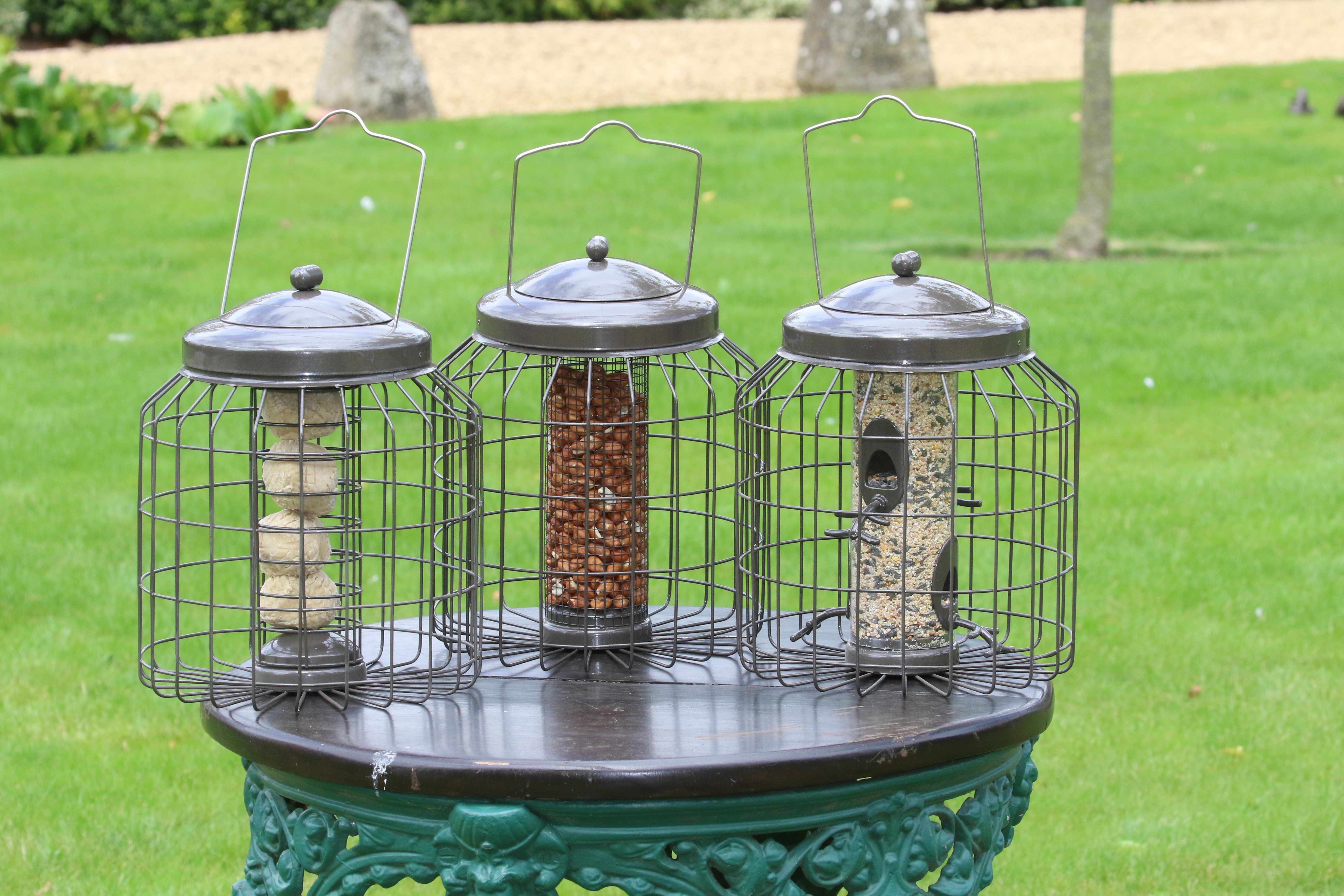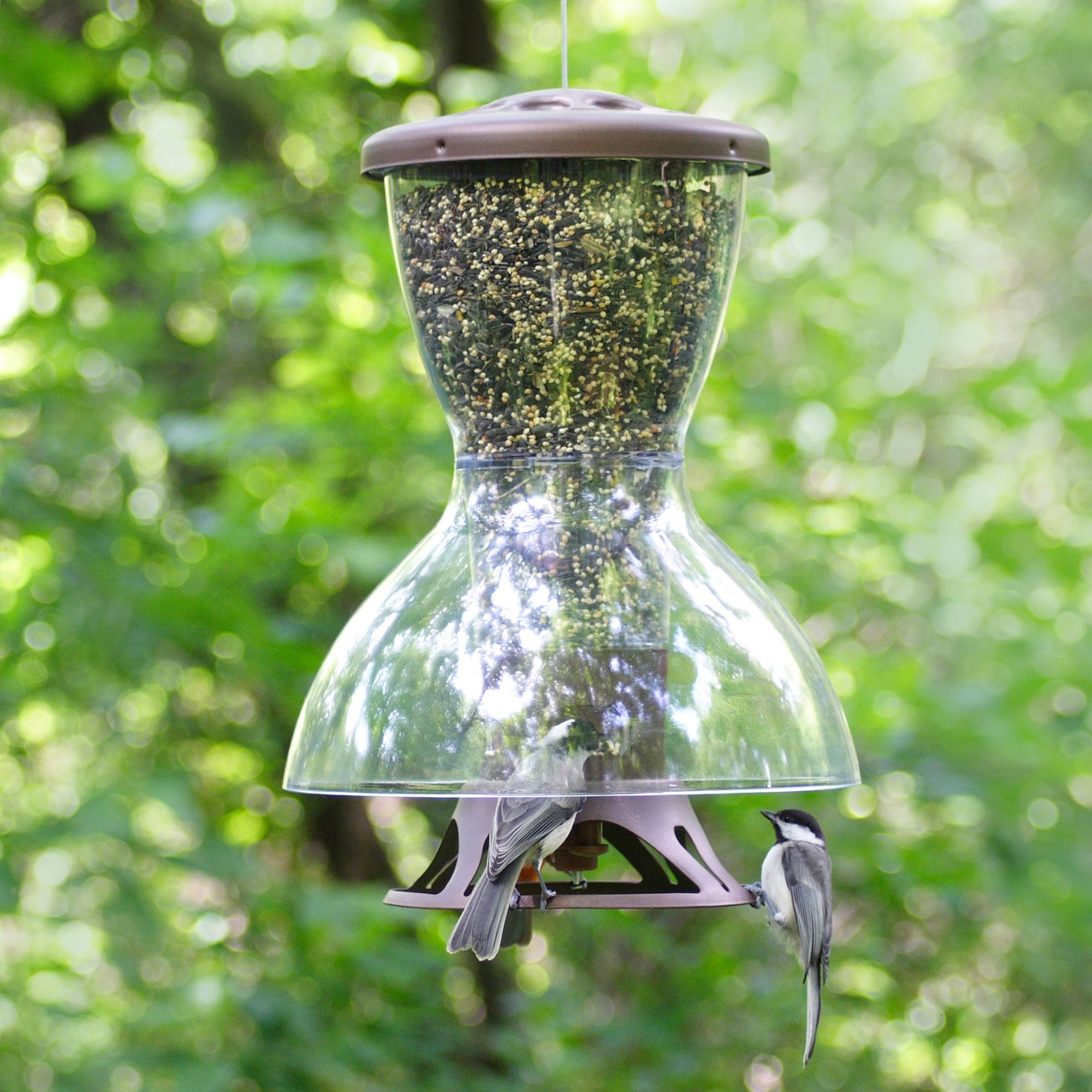Introducing bird feeders squirrel proof, a comprehensive guide that empowers you to outsmart squirrels and create a haven for your feathered friends. Delve into the fascinating world of squirrel-proof bird feeders, where innovation meets practicality, ensuring your backyard becomes a sanctuary for birds.
Discover the ingenious designs, explore the preferred bird species, and delve into the essential maintenance tips that will keep your feeders hygienic and inviting. Unleash your creativity with innovative squirrel deterrence methods, ranging from visual deterrents to physical barriers, empowering you to reclaim your bird feeders from the persistent squirrels.
Squirrel-Proof Bird Feeder Designs
Squirrel-proof bird feeders employ various designs and mechanisms to deter squirrels from accessing birdseed. These designs can be broadly classified into the following categories:
Weight-Activated Feeders
These feeders use a weight-sensitive platform that closes off the seed ports when a squirrel attempts to climb on it. The weight of a small bird is insufficient to trigger the mechanism, allowing them to feed undisturbed.
Cage-Type Feeders
Cage-type feeders consist of a metal or plastic cage with small openings that allow birds to enter but prevent squirrels from reaching the seed. The cage design provides a physical barrier that squirrels cannot penetrate.
Hopper-Style Feeders
Hopper-style feeders have a sloping roof that prevents squirrels from perching on top and reaching the seed. The seed is dispensed through small openings at the bottom of the hopper, making it accessible only to birds.
Materials Used in Squirrel-Proof Bird Feeder Construction
The choice of materials used in squirrel-proof bird feeder construction affects their durability, effectiveness, and aesthetics. Common materials include:
- Metal:Metal feeders are sturdy and durable, but they can be heavy and expensive.
- Plastic:Plastic feeders are lightweight and affordable, but they may not be as durable as metal feeders.
- Wood:Wooden feeders are attractive and environmentally friendly, but they require regular maintenance to prevent rot.
Feeder Placement and Height
Proper feeder placement and height are crucial for preventing squirrel access. Feeders should be placed:
- At least 10 feet away from trees or other structures that squirrels can use to climb.
- At least 6 feet above the ground.
- In an open area where squirrels have no hiding places.
Bird Species Attracted to Squirrel-Proof Feeders
Squirrel-proof bird feeders are designed to deter squirrels while providing a safe and accessible food source for birds. Understanding the specific bird species that are attracted to these feeders can help bird enthusiasts optimize their feeding strategies and enjoy the presence of a diverse range of avian visitors.
The design features of squirrel-proof feeders, such as weight-activated perches, spring-loaded closures, and slippery surfaces, effectively prevent squirrels from accessing the food. However, these features also create unique feeding opportunities for certain bird species that have adapted to using these feeders.
Bird Species Attracted to Squirrel-Proof Feeders
- Chickadees:Chickadees are small, acrobatic birds that are known for their ability to cling to and maneuver on branches and feeders. Their small size and agility allow them to easily perch on the weight-activated perches of squirrel-proof feeders.
- Nuthatches:Nuthatches are also small birds that are adept at clinging to vertical surfaces. They have strong feet and sharp claws that enable them to grip the slippery surfaces of squirrel-proof feeders.
- Woodpeckers:Woodpeckers are larger birds with strong beaks and sharp claws. They are able to peck and cling to the perches of squirrel-proof feeders, using their tails for support.
- Finches:Finches are small, seed-eating birds that are attracted to the variety of seeds typically found in squirrel-proof feeders. Their small size allows them to easily access the feeding ports.
- Cardinals:Cardinals are larger, colorful birds that are also attracted to the seeds in squirrel-proof feeders. Their strong beaks enable them to crack open even the toughest seeds.
Maintenance and Cleaning of Squirrel-Proof Bird Feeders

Proper maintenance and cleaning of squirrel-proof bird feeders are essential for the health and well-being of birds. Squirrel-proof feeders are designed to keep squirrels out, but they can still accumulate dirt, debris, and bird droppings, which can harbor bacteria and mold.
Regular cleaning helps prevent the spread of disease and keeps your feeders safe for birds.
Frequency of Cleaning
The frequency of cleaning required for squirrel-proof bird feeders depends on the type of feeder and the amount of use it gets. Generally, feeders should be cleaned at least once a week, but more frequently if they are heavily used or if there is a lot of rain or snow.
Materials for Cleaning
To clean squirrel-proof bird feeders, you will need:
- A mild dish soap
- A soft brush or sponge
- A bucket of warm water
- A clean towel
Cleaning Procedure
- Remove the feeder from the pole or hook.
- Empty any remaining seed or debris from the feeder.
- Fill a bucket with warm water and add a small amount of dish soap.
- Use a soft brush or sponge to scrub the feeder, paying special attention to the perches and other areas where birds can come into contact with the feeder.
- Rinse the feeder thoroughly with clean water.
- Allow the feeder to dry completely before refilling it with seed.
Preventing Mold and Bacteria Growth
To prevent mold and bacteria growth in squirrel-proof bird feeders, it is important to keep them clean and dry. Clean feeders regularly, and allow them to dry completely before refilling them. You can also help prevent mold and bacteria growth by placing the feeder in a sunny location and avoiding overfilling it with seed.
Creative Solutions for Squirrel Deterrence: Bird Feeders Squirrel Proof

Squirrels are notorious for their acrobatic skills and determination to access bird feeders. While squirrel-proof feeders offer a reliable solution, there are also creative and innovative methods to deter these furry acrobats without resorting to exclusionary devices.
Visual Deterrents
Squirrels have keen eyesight and are wary of potential predators. Using visual deterrents, such as fake owls or hawks, can effectively scare them away. These decoys mimic natural predators and trigger the squirrels’ flight instinct.
Auditory Deterrents
Loud noises can also startle squirrels and keep them at bay. Motion-activated sprinklers or ultrasonic devices emit sudden bursts of sound or water when triggered, creating an unpleasant experience for the squirrels.
Physical Deterrents
Physical barriers can make it difficult for squirrels to climb or reach bird feeders. Applying a slippery substance, such as petroleum jelly, around the feeder pole or using baffles that prevent squirrels from getting a grip can effectively deter them.
Ethical Considerations
While deterring squirrels is important, it’s crucial to ensure that the methods used are ethical and do not harm the animals. Avoid using traps or harmful chemicals that could injure or poison squirrels.
Potential Drawbacks, Bird feeders squirrel proof
Some creative squirrel deterrence methods may have drawbacks. For instance, fake predators can attract other wildlife, while motion-activated sprinklers can be triggered by other animals or strong winds, wasting water.
Conclusive Thoughts
As you embark on this journey of creating a squirrel-proof haven for birds, remember that knowledge is power. Embrace the insights provided in this comprehensive guide, and you’ll transform your backyard into a thriving ecosystem where birds can feast without fear, and squirrels are left outwitted.

